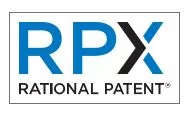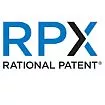- within Litigation and Mediation & Arbitration topic(s)
District Judge Rodney Gilstrap has overturned the $308M verdict that Personalized Media Communications, LLC (PMC) won against Apple in March, ruling on August 5 that the NPE's strategic delay in prosecuting the patent rendered it unenforceable due to the equitable doctrine of prosecution laches. Should it survive a likely appeal, the decision could have a cascading impact throughout the long-running PMC campaign, as the invalidated patent belongs to a 106-member family that forms the bulk of the NPE's portfolio.
As detailed in RPX's prior coverage, PMC filed its case against Apple (2:15-cv-01366) in July 2015, but the suit was stayed for a lengthy stretch in light of inter partes reviews (IPRs) of the patents-in-suit. In September 2017, the Patent Trial and Appeal Board (PTAB) invalidated several claims from one of the patents (8,191,091), including those at issue against Apple (IPR2016-00755). However, last March the Federal Circuit overturned that ruling, holding that the Board had applied an erroneous claim construction. Following the partial revival of the '091 patent, Judge Gilstrap then lifted a stay of the district court case as to the claims of that patent only. The case went to trial in March 2021; following the parties' mid-trial stipulation to a judgment of no invalidity under Alice to preserve all rights to appeal, the case culminated in a verdict that Apple had infringed claims 13-16 through the provision of its FairPlay digital rights management (DRM) technology. The jury awarded PMC $308M in damages.
The leadup to that trial, though, saw the court issue a February ruling that preserved several of Apple's affirmative defenses despite a challenge raised by PMC during a discovery dispute. Among those defenses were claims of unclean hands and prosecution laches, the latter rendering a patent unenforceable when it "issued only after an unreasonable and unexplained delay in prosecution that constitutes an egregious misuse of the statutory patent system under a totality of the circumstances"-as summarized by the Federal Circuit in its June 2021 Hyatt v. Hirshfeld decision.
As alleged by Apple, and as later explained by Judge Gilstrap, "[f]rom 1981 until 1994, PMC and its inventors prosecuted their patent applications serially", filing continuation applications "as late as the law allowed" according to testimony from named inventor John Harvey. Further Harvey testimony established that this strategy was designed to ensure that each patent term would start as late as possible, as various other internal documents corroborated. Patents issuing as a result of such a strategy are commonly known as "submarine patents", which a PMC licensing executive defined during testimony as "'a patent that's been in the patent office for an extended period [of] time'-intentionally or otherwise"-agreeing that the definition applied to his company's patents. A second facet of PMC's strategy, per Judge Gilstrap, was to "keep its patent portfolio hidden until after the claimed subject matter became widely adopted in the industry, and only then-after infringement was engrained and widespread-engage in licensing or enforcement efforts".
Complicating those efforts was the US entry into the General Agreement on Tariffs and Trade (GATT), which led Congress to amend 35 USC Section 154 to establish patent terms ending 20 years after the earliest claimed priority date for patents filed on or after June 8, 1995. That change foreclosed serial prosecution strategies like PMC's. In response, the NPE filed 326 continuation applications claiming priority to the family's first two applications, which had been filed in 1981 and 1987, in an attempt to benefit from the pre-GATT rules-part of a larger wave of applications known as the "GATT bubble".
PMC would greatly expand the number of claims during prosecution, later conceding that some of these were "placeholder" claims. Examiners would also fault the NPE's submission of thousands of prior art references with little to no relevance to the disclosed inventions. The USPTO would subsequently issue several double-patenting rejections during prosecution, at some points even suspending prosecution due to the administrative burden of reviewing so many claims. As the examiner evaluated PMC's arguments and submissions related to priority, it variously characterized them as "straw men", "lame", "repugnant", "NONSENSE", "[c]learly" having "a conflict between two . . . positions", "mystify[ing]", "careless[]", and "an unnecessary drain on already limited PTO resources", among other descriptors. The application that later issued as the '091 patent was among those that received double-patenting rejections, also suffering from the other issues cited above-with PMC's conduct leading to multiple suspensions of prosecution. The '091 patent ultimately issued in 2012, despite its 1995 filing date.
Judge Gilstrap addressed Apple's prosecution laches claim in an August 5 ruling that followed a June bench trial and appears to be the first to apply the Federal Circuit's Hyatt decision, which issued weeks before that trial. In Hyatt, the Federal Circuit explained that "the doctrine of prosecution laches places an additional, equitable restriction on patent prosecution conduct beyond those imposed by statute or PTO regulation". Under Hyatt, an accused infringer must prove two elements to use the defense of prosecution laches: 1) it must show that "the patentee's delay in prosecution was unreasonable and inexcusable under the totality of the circumstances", and 2) that the result of that delay was prejudice to the accused infringer or to the public.
Judge Gilstrap ruled that Apple had met its burden of proving both elements through "clear and convincing" evidence. With respect to PMC's delay in prosecution, Judge Gilstrap found that the circumstances were very similar to those found "unreasonable and inexcusable" in Hyatt. As in that case, PMC's applications "duplicated a small universe of earlier applications", were filed with a similarly lengthy delay, initially contained placeholder claims, and ballooned to a complexity and volume that "made it difficult, if not impossible, for examiners to determine the claims' priority dates for purposes of identifying the relevant body of prior art, to determine whether the claims satisfy the written description requirement, and to identify double patenting issues". This issue was made even worse, Judge Gilstrap found, due to the "scope and content of PMC's prior art disclosure".
Moreover, Judge Gilstrap rejected PMC's argument that its case was distinct because eventually "PMC met with the PTO to develop a consolidation agreement and demarcated its applications by subject matter", whereas the inventor in Hyatt lacked a "master plan" for prosecution. This distinction was immaterial, held Judge Gilstrap, as it is the applicant's conduct, irrespective of the USPTO's more hands-on approach here, that is considered for prosecution laches. "Even though the PTO assented to this consolidation plan, that does not automatically vindicate the public interest that prosecution laches protects", continued Judge Gilstrap. He further determined that this belated development of a plan "does not excuse its absence of a plan at the time of its voluminous filings", whereas instead it pursued a "shoot first, aim later strategy"-while the consolidation agreement itself caused delays of its own.
Considering the totality of the circumstances, Judge Gilstrap observed that PMC had obtained the 30 to 50 years of patent protection it had sought for its patents, remarking that "[d]elays of this magnitude do not occur by accident and do not occur when an applicant reasonably pursues prosecution". In this context, he found that Apple had "presented clear and convincing evidence of an unreasonable and unexplained delay, similar in length to delays previously held to constitute laches".
Under the second prong of Hyatt, Judge Gilstrap found that "the record presented evinces clear evidence that Apple developed intervening rights, and therefore was prejudiced, during the period of delay". In particular, Judge Gilstrap found that "PMC delayed presentation of an instruct-to-enable-signal-based decryption method to the PTO until at least 2003", whereas diligent prosecution would have led the NPE to claim that invention much earlier. As a result, by 2005-almost ten years after PMC filed its applications, but nearly seven years before the '091 patent's issuance-Apple had developed and refined its accused FairPlay DRM system. Indeed, Judge Gilstrap noted that PMC was prosecuting the '091 patent when it was in licensing negotiations with Apple, and "subsequently amended the claims it would later assert". Since Apple had therefore "presented clear and convincing evidence that it worked on, invested in, and used the claimed technology during the period of delay", Judge Gilstrap held it had shown ample evidence of prejudice.
Having found that Apple had satisfied both prongs of Hyatt, Judge Gilstrap concluded by overturning the jury's infringement verdict. While expressing a reticence to disturb such a verdict, he held that Hyatt makes it clear that the "course of conduct undertaken by PMC constitutes an unreasonable delay and an abuse of the statutory patent system. On these compelling facts, the Court sitting in equity has a duty to apply the equitable doctrine of prosecution laches even if it overturns a jury's unanimous verdict".
PMC's CEO has since stated publicly that the NPE plans to appeal the decision. For more on the PMC campaign, including additional background leading up to its just-overturned verdict against Apple, see "Third Patent Plaintiff This Year Wins a Large Verdict from a Texas Jury" (March 2021).
The content of this article is intended to provide a general guide to the subject matter. Specialist advice should be sought about your specific circumstances.


